First, of course, the entire text block is printed
in 'signature' format, along with either a printed wrapper or
printed covers. Then colated, folded and... |
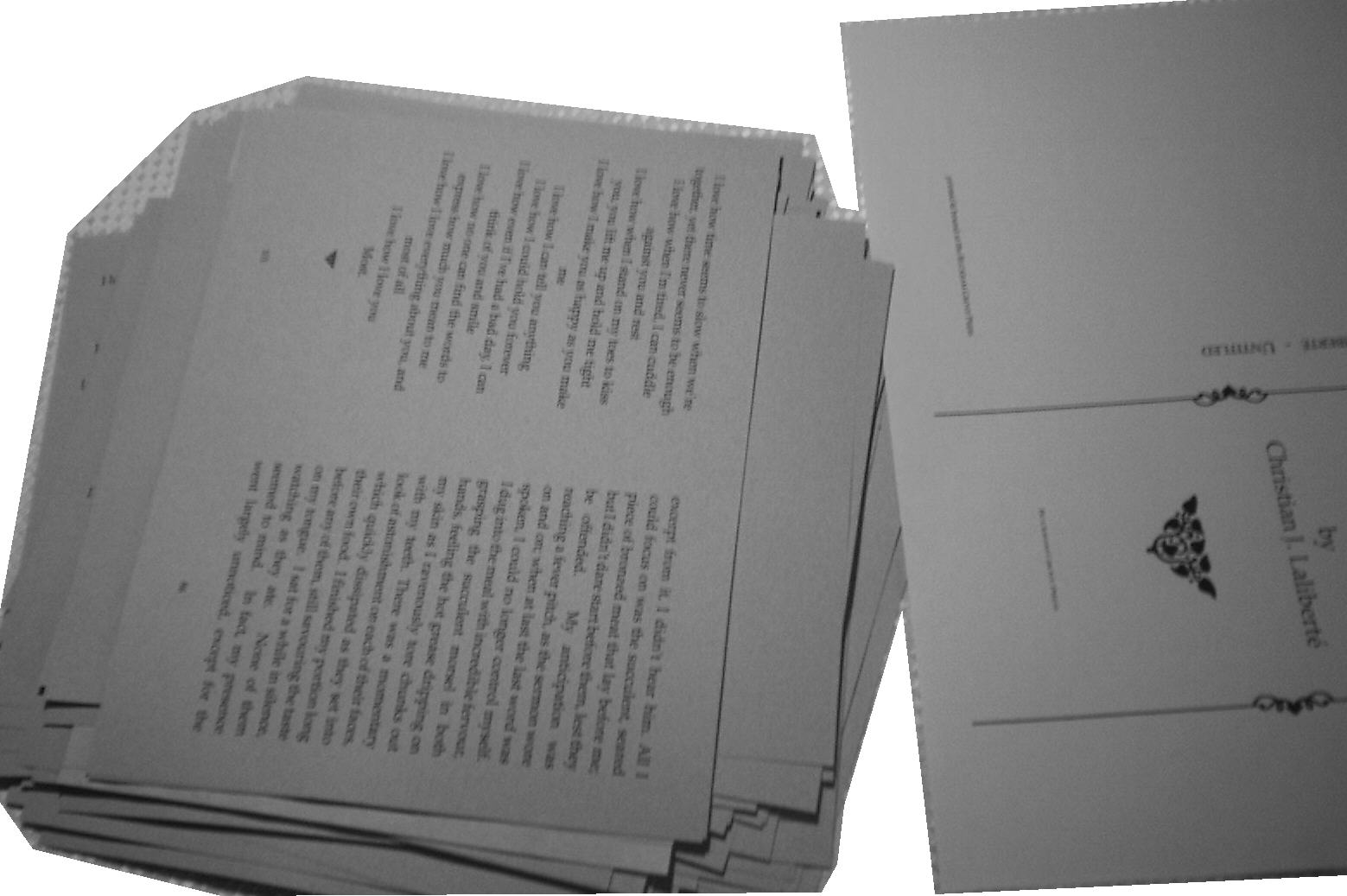 |
stabbed through the fold in preparation for hand-sewing
with needle and thread... |
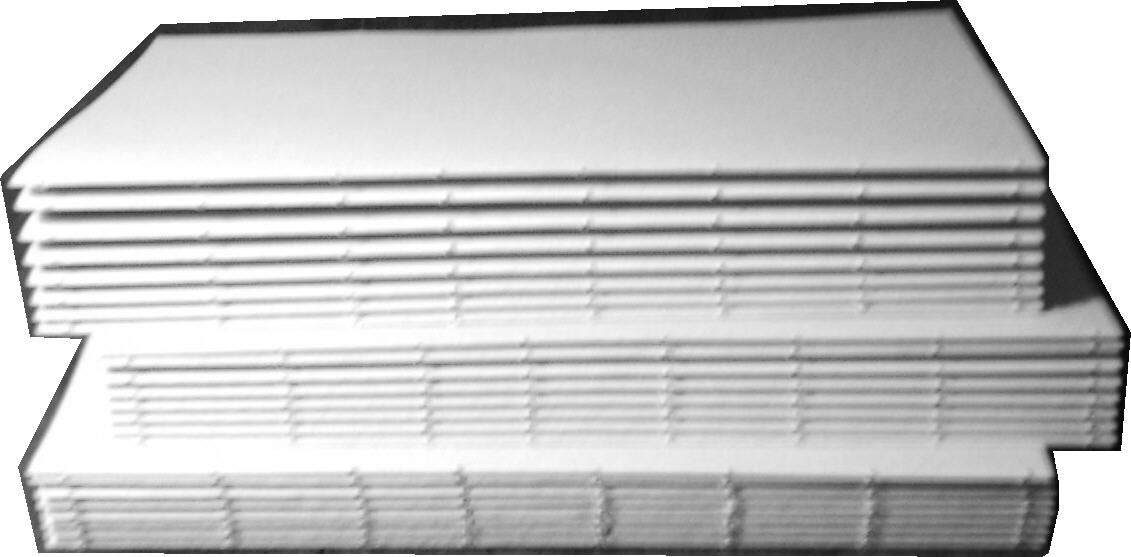 |
Hand-sewing is always done with traditional kettle stitching
and interlocking loops for extra strength and longevity.
If the copy is to be bound in boards (hard-cover) then the sewing
will include cloth tapes which then form part of the hinges along
with additional cloth after 'backing' with adhesive. |
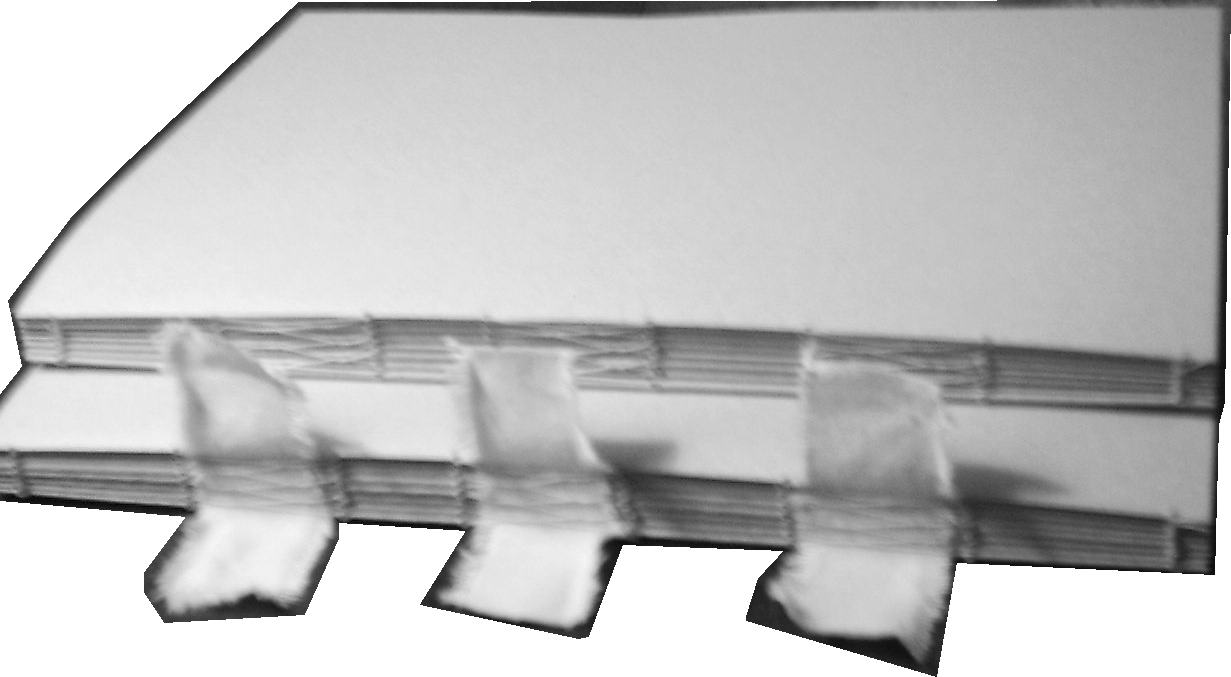 |
Now all of the other binding elements must be created;
typically for a hard-cover binding: boards, spine board or card and
spine cloth (in this case with gold embossed spine title) |
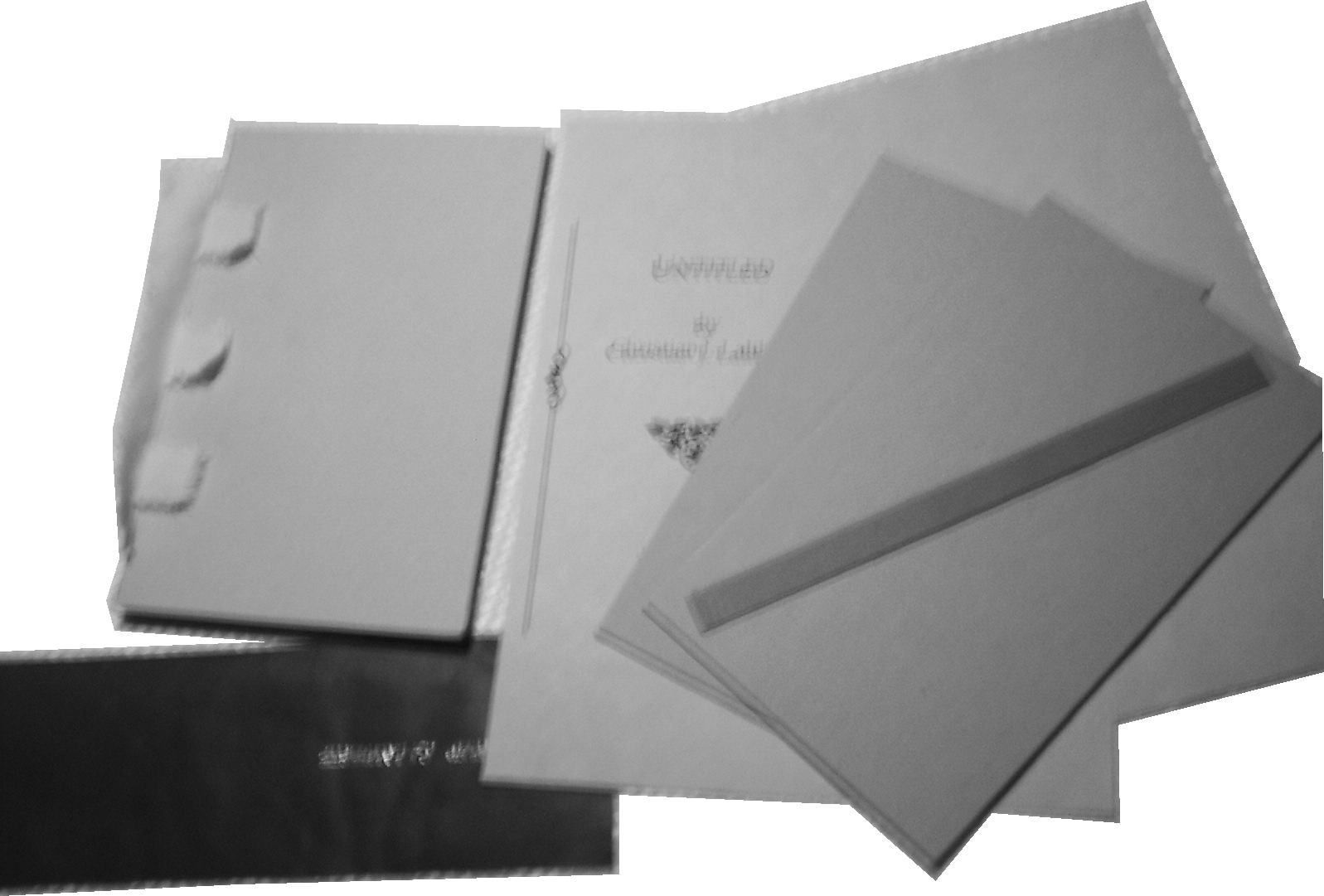 |
Here are examples of a hard-cover bound in boards, with a
cloth spine ("quarter cloth"), and a soft-cover binding with a printed wrapper.
Binders use the term soft-cover binding to avoid confusion
with the term 'paperback' which has come to mean a stack of
single leaves held together with glue only. |
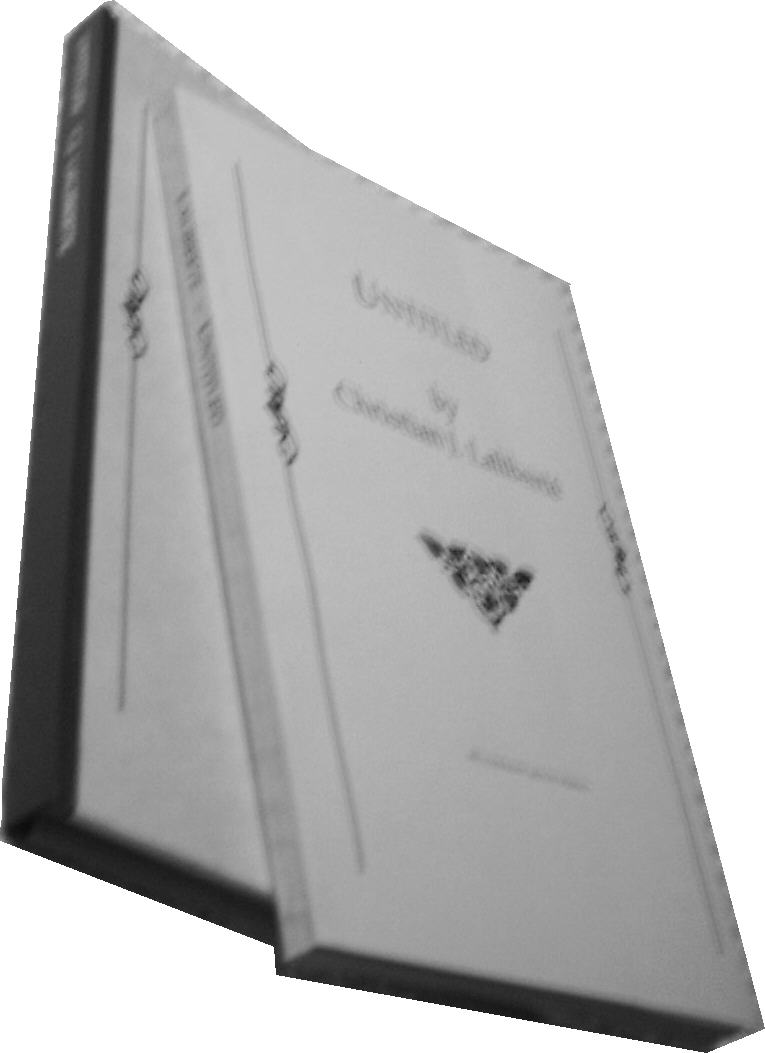 |
The binding techniques described above are all staight
forward and traditional, but if executed competently and with
good quality materials, produce a structure which should last
several centuries if properly cared for. Compared to
the possible 5(?) to 20 years anticipated lifespan of an 'adhesive
only binding. |
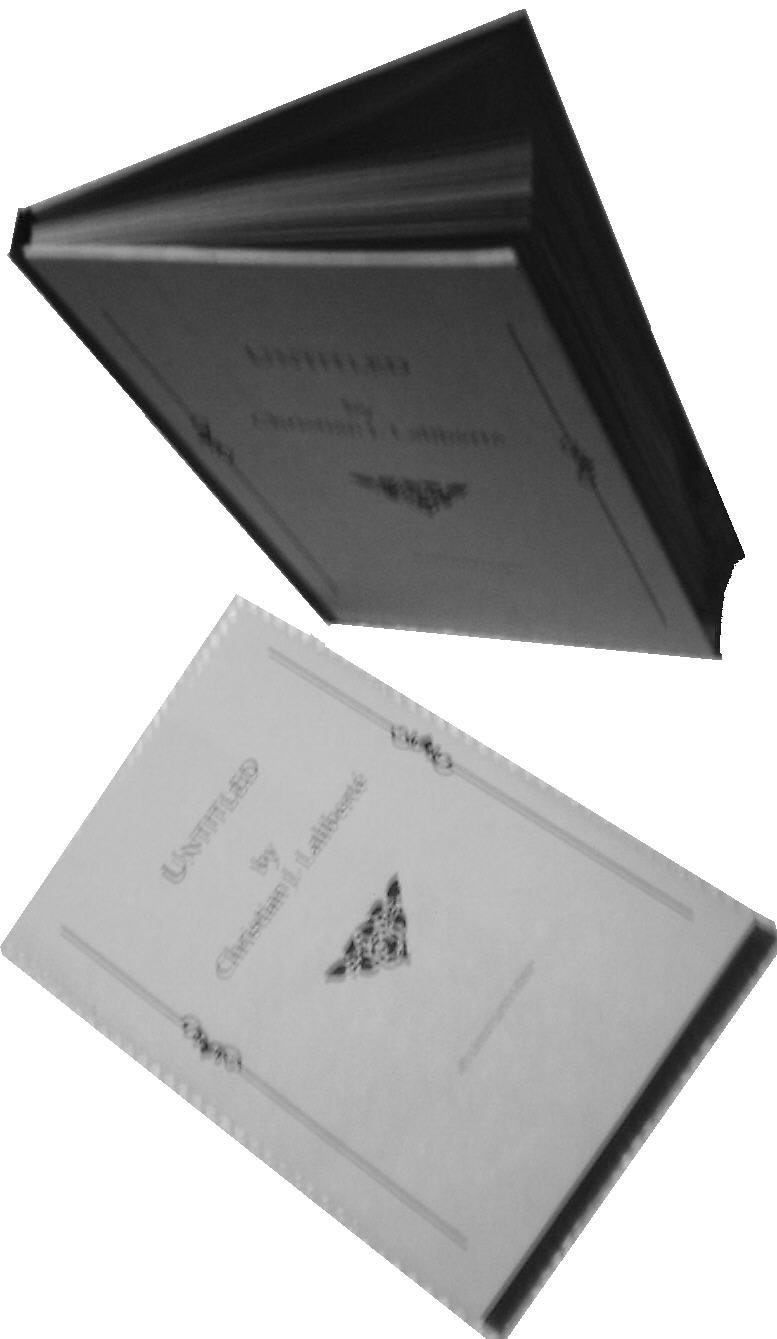 |
